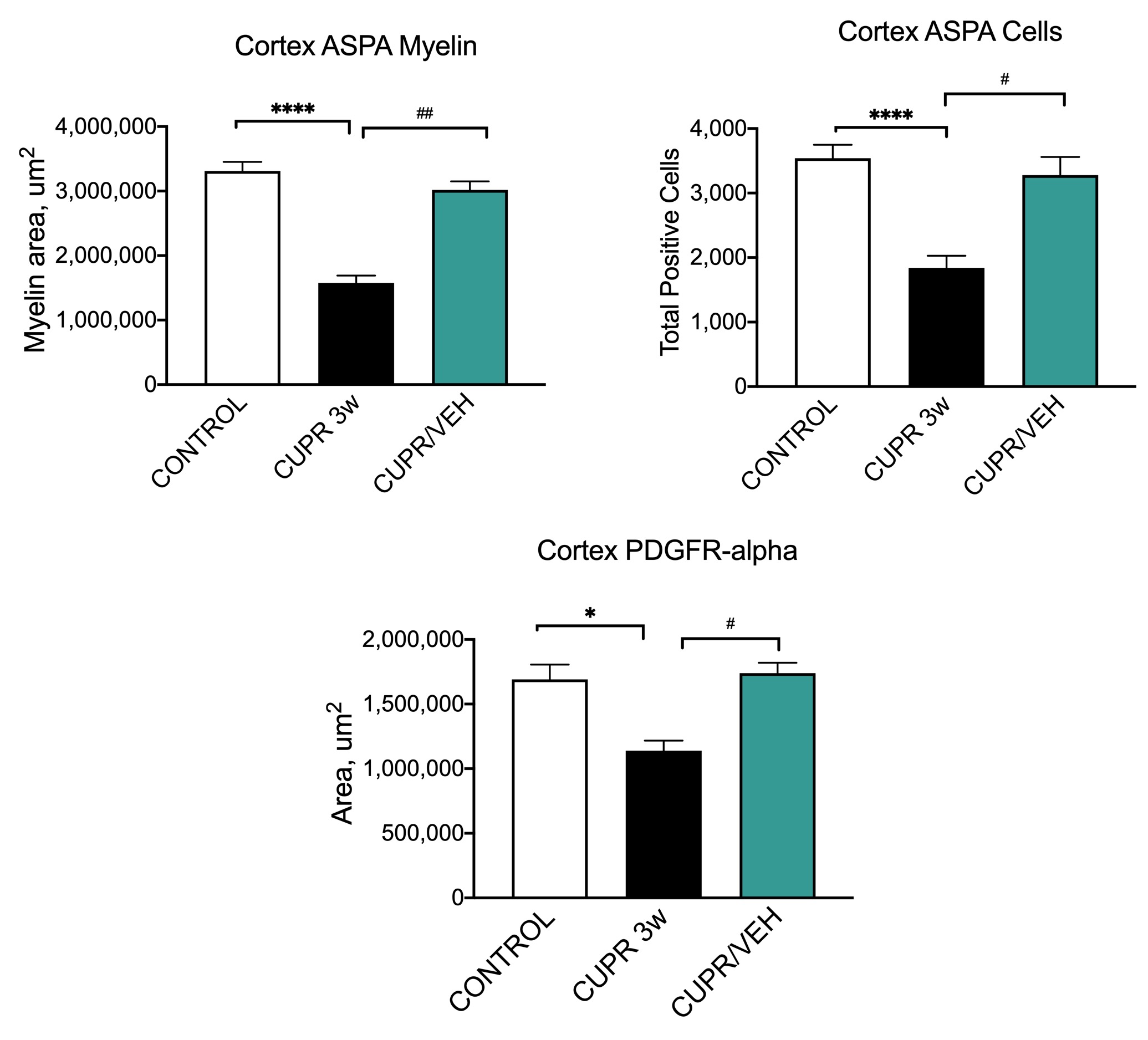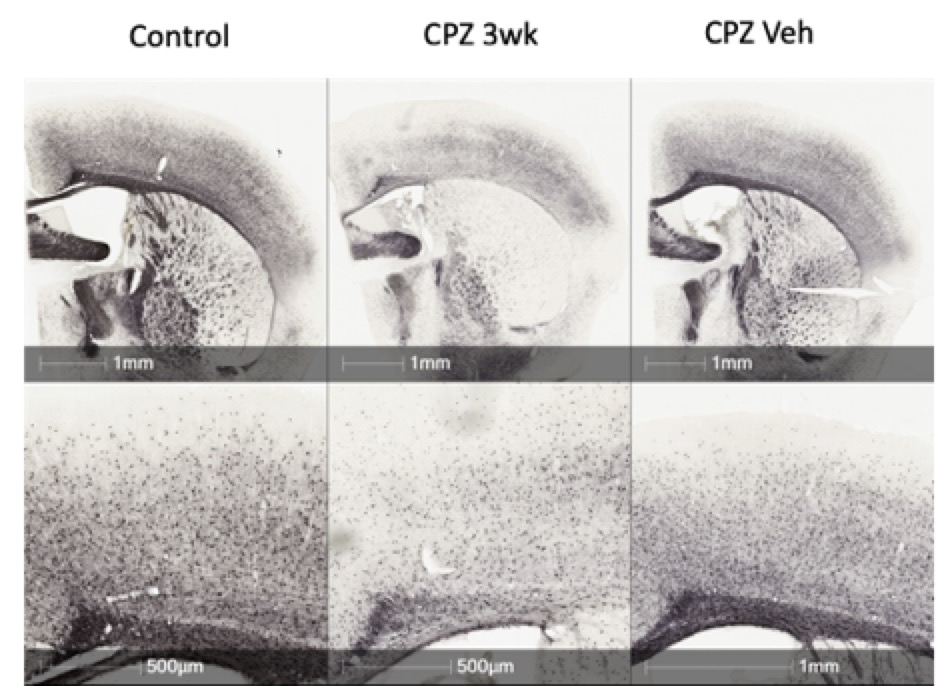Cuprizone Model of Multiple Sclerosis
Discover how Melior’s unique phenotypic screening platforms can uncover the untapped value of your candidate therapeutic
Cuprizone, bis-cyclohexanone oxaldihydrazone, is a neurotoxic copper chelator agent. Its deleterious effects on rodent brain were discovered by the pioneering work of Carlton in 1966. Cuprizone is administered per os by using a 0.2% w/w powdered rodent standard chow ad libitum for 3–8 weeks to C57BL/6 mice. The demyelination process is characterized by selective and progressive apoptosis of mature oligodendrocytes, axonal pathology, activation of astrocytes and microglia, infiltration of macrophages and inflammation and in this way represents an animal model of multiple sclerosis. The interruption of cuprizone feeding allows for a spontaneous remyelination of the brain and a complete recovery. The cuprizone model allows investigators to selectively study demyelination and remyelination processes associated with multiple sclerosis.
In the multiple sclerosis model validation study depicted below, cuprizone was administered for 3 weeks (CUPR 3 w) or 5 weeks with 2 weeks recovery (CUPR/VEH).


Quantitated immunohistochemistry for PDGFR∝ and ASPA. Male C57BL/6J mice (N=8) were administered to the feeding schedule shown in the table above. Aspartocyclase (ASPA) is a marker of mature oligodendrocytes. Platelet derived growth factor-∝(PDGF-∝) is a marker of progenitor oligodendrocytes. Myelin area and cell counts of ASPA-positive cells from 4 representative cortical sections from each animal were determined. PDGF-∝ stained area from 4 representative cortical section from each animal was measured. Data are mean ± SEM and analyzed by non-parametric Kruskal-Wallis test with post-hoc Dunnett’s multiple comparison test. *P<0.05,**P<0.01, ****P<0.0001 compared to Control group and # P<0.05, ## P<0.01 compared to CUPR 3w group.
Representative IHC images for cortical ASPA staining with different magnification. Animals were treated with the control diet (control), cuprizone diet for 3 weeks (CPZ 3w) and cuprizone diet for 5 weeks followed 2 weeks of recovery.
The Cuprizone Multiple Sclerosis Model can be performed in mice or rats. Typical study duration is about 5-8 weeks.

